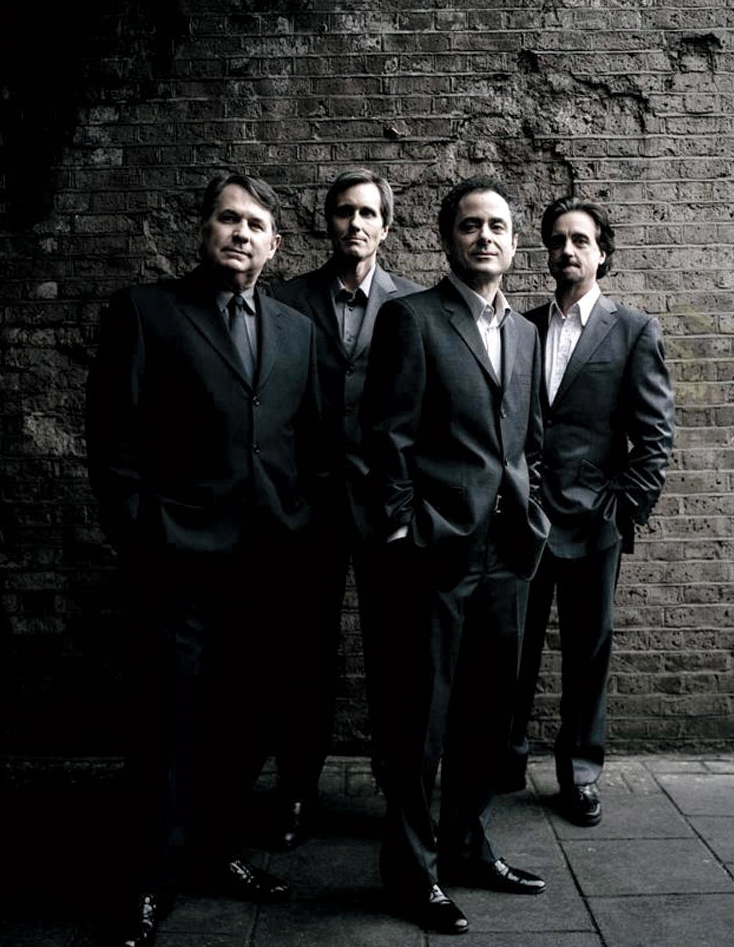Emerson Quartet presents ferocious and insightful Beethoven at Ravinia

It’s hard to believe that 36 years have passed since the Emerson Quartet broke into the chamber music circuit and rose to pre-eminence soon after their debut. In the ensuing years their performances of Beethoven, Bartok, and Shostakovich have set new benchmarks for polish and intelligence, and their uncompromising technical standards remain the envy of most others in the field.
The quartet has always seemed a bit less at home with Haydn and Mozart, and they only recently added Mozart’s “Prussian” quartets to their massive recorded survey of the quartet canon. Their performance Friday night at Ravinia’s Martin Theatre opened with the first in this set, No. 21 in D Major.
Even for Mozart this work fairly oozes melodic riches, giving the cello more of the lyrical spoils than was typical of the period, in honor of his royal patron and keen amateur cellist King Friedrich Wilhelm II. The prominence of these quartets in Emerson’s current touring schedule is no doubt related to the announcement in February that cellist David Finckel would soon be leaving the quartet.
Finckel warmed to the occasion with soaring, sinewy lines, and violist Lawrence Dutton was equally engaging in the trio of the third movement. With all four movements in moderate tempo, this is a deceptively difficult work to manage. The quartet’s account was meticulous, transparent, and flawlessly balanced, yet the pacing seemed stiff at times, and the quartet’s involvement with Mozart’s shapely tunes was understated to a fault.
The group then introduced the audience to their latest major commission, Thomas Adés’ The Four Quarters, premiered last year in Carnegie Hall. The work is a meditation on the times of day, and the four movements brim with subtle references to other musical depictions of time, with structure and meter derived from patterns of the human biological clock.
This kind of inspiration is a time-tested method for stoking the creative juices, but at times this music sounds too dependent on its own formula. Adés is a brilliant composer and superb craftsman, but the content here seemed slight for a work of such ambitious proportions. Only in the fourth movement did his construction more fully engage the listener, combining fading chords with faltering, irregular meters that deftly depicted a body in need of rest.
Emerson’s Beethoven interpretations have always occupied a special place in the hearts of chamber music aficionados, and Friday’s reading of his Quartet No. 13 in B flat (op. 130) didn’t disappoint.
This is a craggy, asymmetrical creation with an undercurrent of tragedy and pathos that only a group with their reserves of experience can fully realize. Not content to depend on excessive rhythmic fluidity or precious phrasing to build their case, they relied instead on an uncanny sense of tension and release to navigate a score that still seems impossibly radical even today. The Adagio was deeply moving, doused with fervor and poignancy even in subdued passages.
The foursome choose to finish the evening with Beethoven’s original Grosse Fuge finale rather than the lighter replacement the composer provided when patrons balked at the fugue’s severity and length. Emerson dug deep for a ferocious reading of unrelenting drive, drawing on reserves of unfaltering stamina, raw vigor, and uncompromising insight.
Posted in Performances




